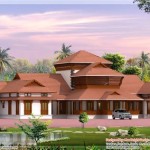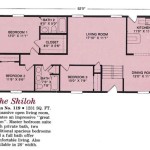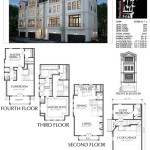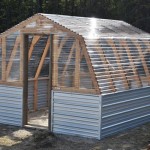Small mountain house plans refer to architectural designs specifically created for compact dwellings situated in mountainous terrains. These plans prioritize maximizing space utilization while harmonizing with the surrounding natural environment. A typical example of a small mountain house plan might involve a cozy cabin nestled amidst a dense forest, featuring a sloping roof and expansive windows that offer breathtaking mountain views.
In designing small mountain houses, architects face unique challenges posed by the rugged and often unforgiving terrain. Slope, elevation, and access to resources must be carefully considered. However, these constraints also present opportunities for innovation, leading to the creation of highly functional and aesthetically pleasing homes.
In the following sections, we will delve into the key considerations, design principles, and available resources for small mountain house plans. Whether you are an aspiring homeowner seeking to build your dream retreat or a professional architect specializing in mountain architecture, this article will provide valuable insights and guidance.
When considering small mountain house plans, it is essential to keep in mind the following key points:
- Maximize space
- Prioritize natural light
- Consider slope and elevation
- Choose durable materials
- Incorporate energy efficiency
- Optimize storage solutions
- Respect the environment
- Consider accessibility
- Plan for outdoor living
- Seek professional guidance
By carefully considering these factors, you can create a small mountain house that is both functional and beautiful, a true haven amidst the grandeur of nature.
Maximize space
In a small mountain house, every square foot counts. To make the most of the available space, consider the following strategies:
Open floor plan: An open floor plan eliminates unnecessary walls and partitions, creating a more spacious and airy feel. Combine the living room, dining room, and kitchen into one large, open area to maximize the sense of space and flow.
Multi-functional spaces: Design rooms to serve multiple purposes. For example, a guest room can also be used as a home office or a playroom. A loft area can be used for sleeping, storage, or a cozy reading nook.
Built-in furniture: Built-in furniture, such as benches, shelves, and cabinets, can save space and create a more cohesive look. Consider incorporating built-in seating into window nooks or along walls to maximize seating without taking up valuable floor space.
Vertical storage: Utilize vertical space by installing shelves, cabinets, and drawers that extend from floor to ceiling. Use stackable bins and baskets to store items vertically, making the most of every inch of space.
Declutter and organize: Regularly declutter and organize your belongings to avoid unnecessary clutter and maximize the perceived spaciousness of your home. Implement smart storage solutions, such as under-bed storage, drawer organizers, and wall-mounted shelves, to keep your belongings organized and out of sight.
Prioritize natural light
Natural light not only brightens and warms a home, but it also has numerous health benefits, including improved mood, increased productivity, and better sleep.
In a small mountain house, maximizing natural light can be a challenge due to the often limited window space and surrounding trees. However, there are several design strategies that can be employed to bring in as much natural light as possible:
Large windows and doors: Install large windows and doors to allow ample natural light to flood into the home. Consider floor-to-ceiling windows or sliding glass doors to create a seamless connection between the indoors and outdoors.
Skylights and solar tubes: Skylights and solar tubes are excellent ways to bring natural light into areas of the home that do not have access to exterior walls. Skylights can be installed in the roof, while solar tubes are reflective tubes that channel sunlight from the roof down into the home.
Consider slope and elevation
The slope and elevation of the land can significantly impact the design and construction of a small mountain house. Here are some key considerations:
- Building site selection: Carefully select the building site to minimize the impact of slope and elevation on the home’s design and cost. Choose a site with a gentle slope, if possible, to reduce the need for extensive grading and excavation.
- Foundation design: The type of foundation required will depend on the slope and elevation of the land. A house built on a steep slope may require a more complex and expensive foundation system, such as a pier and beam foundation or a retaining wall.
- Grading and drainage: Proper grading and drainage are essential to prevent water damage to the home. The land should be graded to direct water away from the foundation and downspouts should be installed to channel rainwater away from the house.
- Access and utilities: Consider the access to the building site and the availability of utilities, such as water, electricity, and gas. Building on a steep slope or at a high elevation may require additional infrastructure, such as a longer driveway or a private well.
By carefully considering the slope and elevation of the land, you can design and build a small mountain house that is both safe and beautiful.
Choose durable materials
Exterior materials
The exterior materials of a small mountain house should be durable enough to withstand the harsh mountain climate, including extreme temperatures, high winds, and heavy snow. Some popular exterior materials for mountain homes include:
- Wood: Wood is a classic choice for mountain homes, providing a warm and rustic look. However, wood requires regular maintenance to protect it from rot and insects.
- Stone: Stone is a durable and fire-resistant material that can give a mountain home a timeless look. However, stone can be expensive to install and may require a stronger foundation.
- Metal: Metal siding is a durable and low-maintenance option for mountain homes. It is available in a variety of colors and styles, and it can be installed quickly and easily.
- Fiber cement: Fiber cement siding is a composite material that is resistant to fire, moisture, and insects. It is also relatively affordable and easy to install.
Roofing materials
The roofing material of a small mountain house should be able to withstand high winds and heavy snow loads. Some popular roofing materials for mountain homes include:
- Asphalt shingles: Asphalt shingles are a popular and affordable roofing material for mountain homes. However, they may need to be replaced more often than other roofing materials.
- Metal roofing: Metal roofing is a durable and long-lasting roofing material that can withstand high winds and snow loads. It is also fire-resistant and low-maintenance.
- Tile roofing: Tile roofing is a durable and fire-resistant roofing material that can give a mountain home a Mediterranean-style look. However, tile roofing can be expensive to install and may require a stronger roof structure.
Incorporate energy efficiency
Insulation
Proper insulation is essential for maintaining a comfortable indoor temperature in a small mountain house, reducing the need for heating and cooling. Use high-quality insulation in the walls, roof, and floor to minimize heat loss. Consider using spray foam insulation, which can seal even the smallest gaps and cracks.
Windows and doors
Windows and doors are major sources of heat loss in a home. Choose energy-efficient windows and doors with double or triple glazing and tight seals to reduce air leakage. Consider installing storm windows or doors for added insulation during the winter months.
Heating and cooling systems
Choose energy-efficient heating and cooling systems that are right-sized for your home. Consider using a heat pump, which can both heat and cool your home efficiently. Install a programmable thermostat to automatically adjust the temperature when you are away or sleeping.
Lighting
Use energy-efficient LED lighting throughout your home. LED bulbs use up to 80% less energy than traditional incandescent bulbs and last much longer. Install dimmer switches to adjust the brightness of the lights, which can also save energy.
Appliances
When purchasing appliances, look for models with the ENERGY STAR label. ENERGY STAR appliances meet strict energy efficiency standards, which can save you money on your energy bills.
Renewable energy
Consider installing renewable energy sources, such as solar panels or a small wind turbine, to generate your own electricity. This can significantly reduce your reliance on the grid and lower your energy costs.
Optimize storage solutions
Paragraph before list
In a small mountain house, every square foot of space counts. Optimizing storage solutions is essential to keep your home organized and clutter-free.
List
Utilize vertical space: Install shelves, cabinets, and drawers that extend from floor to ceiling to maximize vertical space. Use stackable bins and baskets to store items vertically, making the most of every inch of space.Create hidden storage: Build hidden storage into your furniture, such as drawers under beds or benches, and shelves behind mirrors. This is a great way to store items that you don’t use on a regular basis.Use multi-purpose furniture: Choose furniture that serves multiple purposes, such as ottomans with built-in storage or coffee tables with drawers. This can help you save space and keep your home organized.Declutter regularly: Regularly declutter your belongings to get rid of anything you don’t need. Donate or sell items that you no longer use, and be ruthless about throwing away anything that is broken or damaged.
Paragraph after list
By following these tips, you can optimize storage solutions in your small mountain house and create a more organized and comfortable living space.
Respect the environment
When designing and building a small mountain house, it is important to consider the impact on the environment. By incorporating sustainable practices, you can minimize the environmental footprint of your home and protect the natural beauty of the surrounding mountains.
- Use sustainable building materials: Choose building materials that are sustainably sourced and have a low environmental impact. This includes using recycled materials, locally sourced materials, and materials that are certified by third-party organizations, such as the Forest Stewardship Council (FSC).
- Minimize site disturbance: During construction, take steps to minimize the disturbance to the site. This includes preserving existing vegetation, protecting water sources, and using erosion control measures to prevent soil runoff.
- Conserve water: Install low-flow fixtures and appliances to reduce water usage. Consider collecting rainwater for irrigation or other non-potable uses. Use native plants in your landscaping to reduce the need for watering.
- Reduce energy consumption: Incorporate energy-efficient features into your home, such as insulation, energy-efficient windows and doors, and energy-efficient appliances. Consider using renewable energy sources, such as solar panels or a small wind turbine, to generate your own electricity.
By following these tips, you can design and build a small mountain house that is both sustainable and beautiful, and that minimizes the impact on the environment.
Consider accessibility
Accessibility is an important consideration for small mountain house plans, especially if you or your family members have mobility issues. By incorporating accessible features into your home, you can create a more comfortable and livable space for everyone.
- **Design a single-story layout:** A single-story layout is easier to navigate for people with mobility issues. Avoid creating too many stairs or steps, and make sure that all rooms are accessible from the main level.
- **Install ramps and grab bars:** Ramps can be installed to provide access to raised areas, such as porches or decks. Grab bars can be installed in bathrooms and showers to provide support and stability.
- **Widen doorways and hallways:** Standard doorways and hallways may be too narrow for wheelchairs or other mobility devices. Widen doorways and hallways to make them more accessible.
- **Install accessible appliances:** Choose appliances that are accessible for people with disabilities. This includes appliances with front-mounted controls and lever handles.
By following these tips, you can create a small mountain house that is both accessible and beautiful.
Plan for outdoor living
Small mountain houses often have limited indoor space, so it is important to make the most of the outdoors. By planning for outdoor living, you can create a more spacious and enjoyable home.
- Create a deck or patio: A deck or patio is a great way to extend your living space outdoors. It can be used for dining, entertaining, or simply relaxing and enjoying the views.
- Install an outdoor kitchen: An outdoor kitchen is a great way to enjoy cooking and dining outdoors. It can be as simple as a grill and a few chairs, or as elaborate as a full kitchen with all the amenities.
- Create a fire pit: A fire pit is a great way to gather around and enjoy the outdoors on a cool evening. It can also be used for cooking or roasting marshmallows.
- Plant a garden: A garden is a great way to grow your own food and enjoy the outdoors. It can also be a beautiful addition to your home.
By following these tips, you can create a small mountain house that is both comfortable and enjoyable, and that makes the most of the outdoors.
Seek professional guidance
When designing and building a small mountain house, it is important to seek professional guidance from qualified architects and engineers. These professionals can help you to create a safe, functional, and beautiful home that meets your specific needs and budget.
Architects can help you to design a home that is tailored to your lifestyle and the unique challenges of building in a mountain environment. They can also help you to select the right materials and construction methods for your home.
Engineers can help you to ensure that your home is structurally sound and meets all applicable building codes. They can also help you to design a home that is energy-efficient and environmentally friendly.
Working with a professional team of architects and engineers can help you to avoid costly mistakes and ensure that your small mountain house is built to the highest standards.
Benefits of seeking professional guidance
- Expertise and experience: Architects and engineers have the expertise and experience to design and build safe, functional, and beautiful homes. They can help you to avoid costly mistakes and ensure that your home meets your specific needs and budget.
- Objectivity: Architects and engineers can provide you with objective advice about your home design and construction. They can help you to see the big picture and make decisions that are in your best interests.
- Peace of mind: Working with a professional team of architects and engineers can give you peace of mind knowing that your home is being built to the highest standards.
How to find a qualified architect or engineer
- Ask for recommendations: Ask your friends, family, or colleagues for recommendations for qualified architects and engineers. You can also contact your local chapter of the American Institute of Architects (AIA) or the National Society of Professional Engineers (NSPE).
- Interview potential candidates: Once you have a few recommendations, interview potential candidates to find the right fit for your project. Be sure to ask about their experience, qualifications, and fees.
- Check references: Contact the references provided by potential candidates to get feedback on their work.
By following these tips, you can find a qualified architect or engineer to help you design and build your dream small mountain house.










Related Posts








